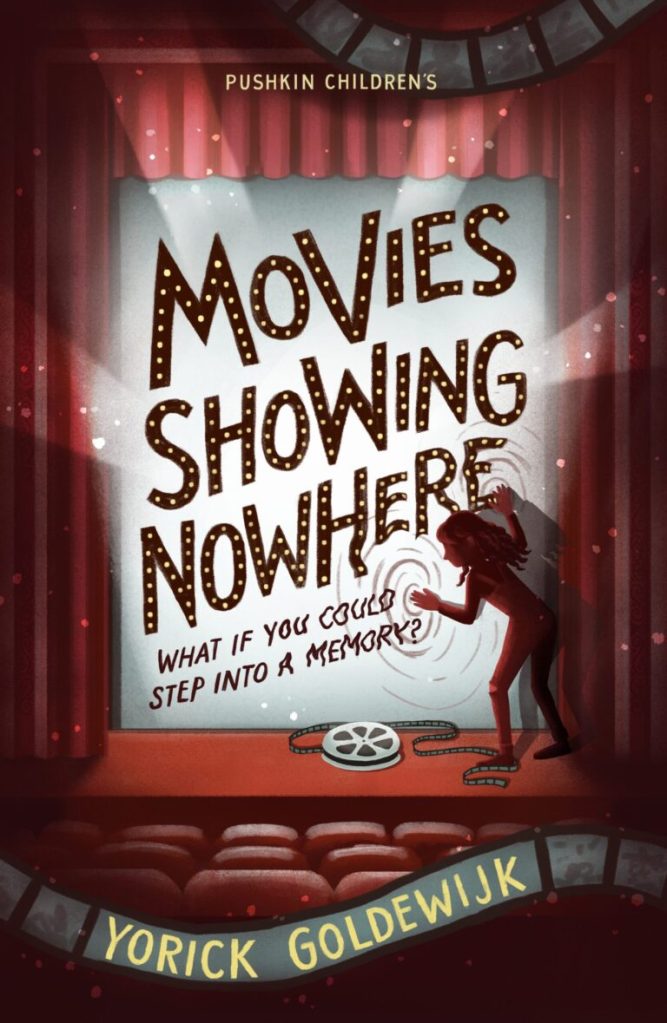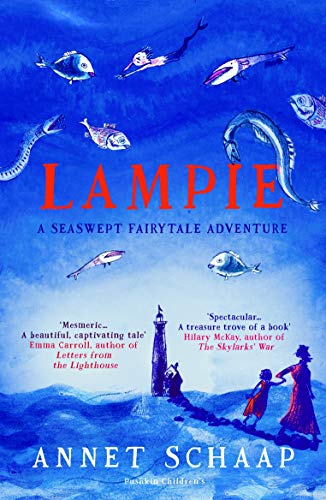This week Dutch author Yorick Goldewijk and translator Laura Watkinson tell us all about their new middle grade release, Movies Showing Nowhere (Pushkin Press).
By Johanna McCalmont

WKL: Yorick, would you like to start by telling us a bit about yourself? You seem to be a man of many talents!
YG: I always wanted to be a writer – since I was very small, actually. But I was absolutely certain of it when I read Ronja the Robber’s Daughter by Astrid Lindgren. I was totally in love with that book. Falling in love with a book is a wonderful experience. It doesn’t happen all the time, of course, but if it does, it’s like nothing else. The same happens to me when I’m writing.
That said, I spent most of my working life composing music. For television, exhibitions and games, for example. To me, music and language are very similar. They both have melody and rhythm, they both evolve over time. So I think both come from the same source somewhere inside.
WKL: I was so pleased to see a review copy of Movies Showing Nowhere arrive in the post. I read it in just a couple of sittings! It’s a wonderful mix of reality, emotions with a touch of magic and fantasy and a great twist at the end. How did this particular story come to you? Was there a particular inspiration for Cate? Or Mrs Kano?
YG: It started when I found an old photo of me in a very old cinema, all by myself. The photo was taken more than twenty years ago, and I hadn’t thought about it for a long time. But when I found it again the image stayed with me for weeks. It felt like there was a story hiding in there and it was as if all I would have to do was to carefully uncover it. Writing, in my case, always begins with a mood, an atmosphere, a feeling. From that, a story slowly unravels. But the feeling that started it all stays with me the whole time while writing. Everything else, plot, characters, is secondary.
When I came up with the plot of Cate and her mum, I felt I had stumbled onto something special, and I became completely obsessed with the story. All I did after that was work on the story, or think of the story, or dream about the story, until it was finished.
WKL: Do you have particular readers in mind when you write?
YG:I try not to think about a possible audience when I’m writing. Actually, the story itself dictates what audience it fits best. I never set out to write for a specific age or in a specific genre. Most importantly I want to write something I would like to read myself – something that I find worthwhile, moving, or cool or funny. So, actually, a particular reader would be me!
WKL: Which sort of reader do you think will like this book?
YG: Up until now the book has appealed to a broad audience. From children roughly nine years old to adults. I think there is a constant sense of mystery that appeals to many readers. The story takes place in the real world and yet it seems like something unexpected might happen any time. And unexpected things do happen, of course! And as you read on, you will want to know how everything is tied together, how it all will make sense (which it will!)
The story has a moving, sad part, but not in a heavy way. It’s more a sense of melancholy that is present, I think: nothing lasts forever, but that is a good thing, because that’s the very reason we love and cherish people and things. And we don’t have to sit and let it slip away – we can take hold of it and dare to live our lives at the moment they’re happening. It is a book that will leave readers with an optimistic and energetic feeling, I think.
I also think many readers will love Cate, the main character, for her rebellious yet fragile nature, and her way of looking at the world.
WKL: Laura, how did you get involved as the translator for this book? How did this book get chosen for translation?
LW: Movies Showing Nowhere had fantastic reviews in the Netherlands and was also really popular with readers here. It won the Dutch award for the best children’s book of the year in 2022 – and rightly so. It’s a book that was always going to attract attention among foreign publishers. So, there will have been some interesting conversations between rights people at the children’s book fair in Bologna, and the book was an obvious candidate for promotion by the Dutch Foundation for Literature. I know that a number of English-language publishers were interested in buying the translation rights, which went to Pushkin Press in the end. They’re a great publishing house and lovely people to work with too, so I think Yorick’s book has found a wonderful home. I’ve worked with Pushkin on several occasions, and Movies Showing Nowhere was very much on their radar. I was lucky to be in the right place at the right time. I can’t remember who it was – me or the publisher – who first brought up the subject of Movies Showing Nowhere, but I’m really pleased that it worked out.
WKL: What is the best piece of advice you’ve ever been given as a translator?
LW: At the beginning of my career, someone once told me that networking was the most useful thing I could do. How can someone offer you great books to translate if they don’t know that you’re there? That made sense to me, and I’ve followed that advice in my own way. So, when asked for advice myself, I’ve always said: network, network, network.
I’ve recently been reflecting on that, however, as I realise not everyone has the same approach when it comes to making connections. Perhaps a better piece of advice would be: Be curious.
It’s great to get to know other people in the same business but do it as an interested reader and writer and fellow human being. I don’t think it’s about pushing to build a huge network of people who might be able to help you. It’s more about following your own curiosity and finding like-minded people who you can enjoy talking to about books that you love. Then maybe you might end up working together too and helping each other out, and it’s a huge bonus if you like each other as friends and/or colleagues. So yes, I’d say be open and curious – and have fun.


WKL: Are there other Dutch children’s books that either of you would recommend to our readers? Any favourites that really stand out for you?
LW: I’m going to have to say Tonke Dragt’s The Letter for the King. It’s a major Dutch children’s classic, and it was the first book I translated for Pushkin Press. Annet Schaap’s books are also amazing. Her Lampie was deservedly shortlisted for the Carnegie Medal, and her recent book Girls, a collection of rather dark retellings of familiar tales, is definitely a recommended read.
YG: I am very fond of Lampie, too. A few childhood favorites are books from Paul Biegel – The Little Captain, for example. I also loved Bizar from Sjoerd Kuijper.
***

As a child, Yorick Goldewijk wanted to be a writer, illustrator and musician. He ended up pursuing a career as the latter, but he kept writing. At the age of 40, he published his first book, Billy Extra Plankgas. In 2022 he won the Gouden Griffel, the most important children’s literature prize in the Netherlands, for Films die nergens draaien (Movies Showing Nowhere). His most recent book, De boom die een wereld was (The Tree that was a World) is a kaleidoscopic collection of animal stories, illustrated by Jeska Verstegen. Yorick’s works range from picture books to young adult and are available in eleven countries. He lives and works in Alkmaar in the Netherlands, close to the sea, together with his wife and two children.

Laura Watkinson is a literary translator who works mainly from Dutch into English, but also translates from German, Italian and Frisian. She has translated a wide range of books, from picture books for the youngest readers to YA thrillers, literary fiction and non-fiction. Some of her recent titles are Mary by Anne Eekhout, an imaginative retelling of the life of the young Mary Shelley, and a number of works of non-fiction by Cees Nooteboom, including Venice and Letters to Poseidon. Laura studied language and literature at Oxford and Cambridge and continues to be fascinated by languages and their relationship to culture. She is currently studying Hebrew, Icelandic and Japanese for beginners. Laura lives in a tall, thin house on a canal in Amsterdam.
